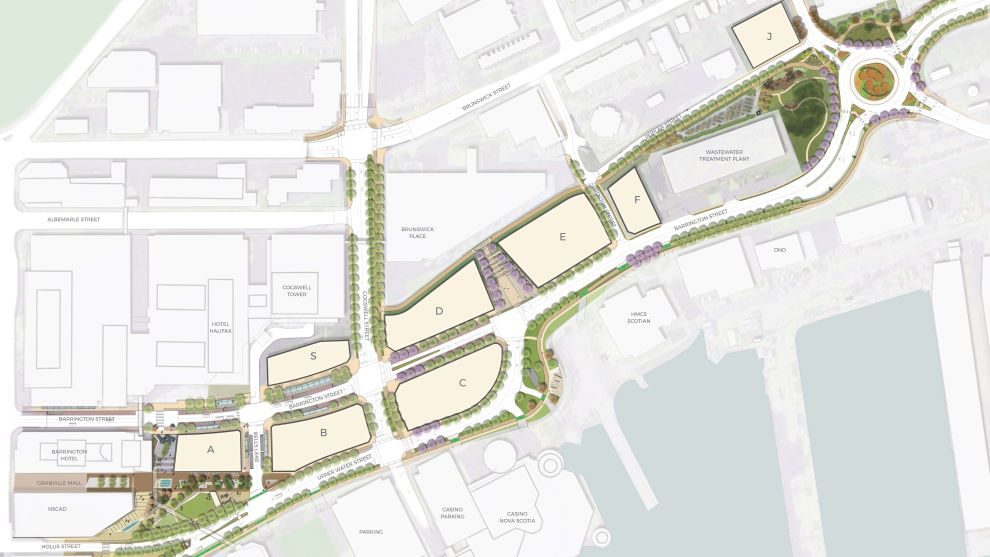Downtown
What construction of the Cogswell redevelopment means for traffic
'Very aggressive plan' includes call for more transit, flexible work schedules

caption
The Cogswell Interchange overpass system, as seen from Barrington Street, will be redeveloped.As the Cogswell Interchange is redeveloped, construction will stifle traffic flow around one of the key entrances into downtown Halifax for an estimated three years.
Halifax regional council approved the Cogswell Interchange 90 per cent design plan on Feb. 26. The project is expected to start this fall and be completed by 2022.
“It’s a very aggressive plan,” says Donna Davis, the Cogswell project manager.
The plan is to maintain a path through the Cogswell district throughout the entire construction process.
The district houses a primary route for trucks carrying containers to Halifax’s southern port, but truck traffic will not be disrupted, says Davis. Some lanes will stay open in order to allow the flow of traffic to continue as normally as possible.
Two lanes for east-to-west traffic on Cogswell Street will remain open, and four lanes for north-to-south traffic will remain open on Barrington Street and Upper Water Street at all times during the construction.
Detours will direct traffic in the area towards these open lanes.
More transit, rideshares
Project staff are developing a specific transportation demand management plan to assist commuters and businesses during the construction period. The goal is to increase trips made by transit, taxis and rideshares, and to lessen demand during peak hours.
One idea is to encourage employers to adopt a flexible work schedule, by stressing the benefits of the redevelopment on tourism and subsequently on businesses in the area.
Transit was a huge priority in planning the phases of construction, says Davis.
The team is co-ordinating with Halifax Transit in order to assign bus route detours. Project staff say there will only be minor adjustments to the routes throughout the construction.
Davis says foot traffic will be mostly undisturbed as many pedways will stay open, and new ones will be created for pedestrians to more easily access Halifax’s waterfront and downtown area.
“We looked at giving other users of the roadway higher priority,” she says regarding the priority of pedestrians in the redevelopment. “The municipality’s Integrated Mobility Plan finally gave us direction in terms of what our priorities are.”

caption
The master design for the 90 per cent plan was passed by regional council on Feb. 26. The letters signify new buildings for rent and ownership.Slowing down traffic
The slowing of traffic, with the installation of intersections instead of roundabouts and the modification of street widths to the thinnest allowed based on provincial road requirements, will make streets safer for pedestrians with mobility issues in the long run, says Davis.
The traffic slowing, both during and after construction, will allow pedestrians to move about the area more safely, a major priority for the team.
“We realized that it’s OK for us to consider that traffic may not move as quickly as it does,” says Davis. “Sometimes congestion can be our friend.”
Despite the redevelopment team’s countermeasures, traffic will still be constricted around the area in a series of adjustments and detours during the construction period.
‘98 per cent really good’
Coun. Waye Mason, whose downtown Halifax district includes the Cogswell Interchange, is confident that it’s all worth it.
“It is not perfect, and I don’t expect it to be perfect, nothing is,” Mason said during the redevelopment presentation to regional council on Feb. 26. He lobbied for the 90 per cent plan to be given the green light. “I think it’s 98 per cent really good.”
Council’s approval allows the project to move into specifications, requirements and construction drawings before the construction contract is awarded.

